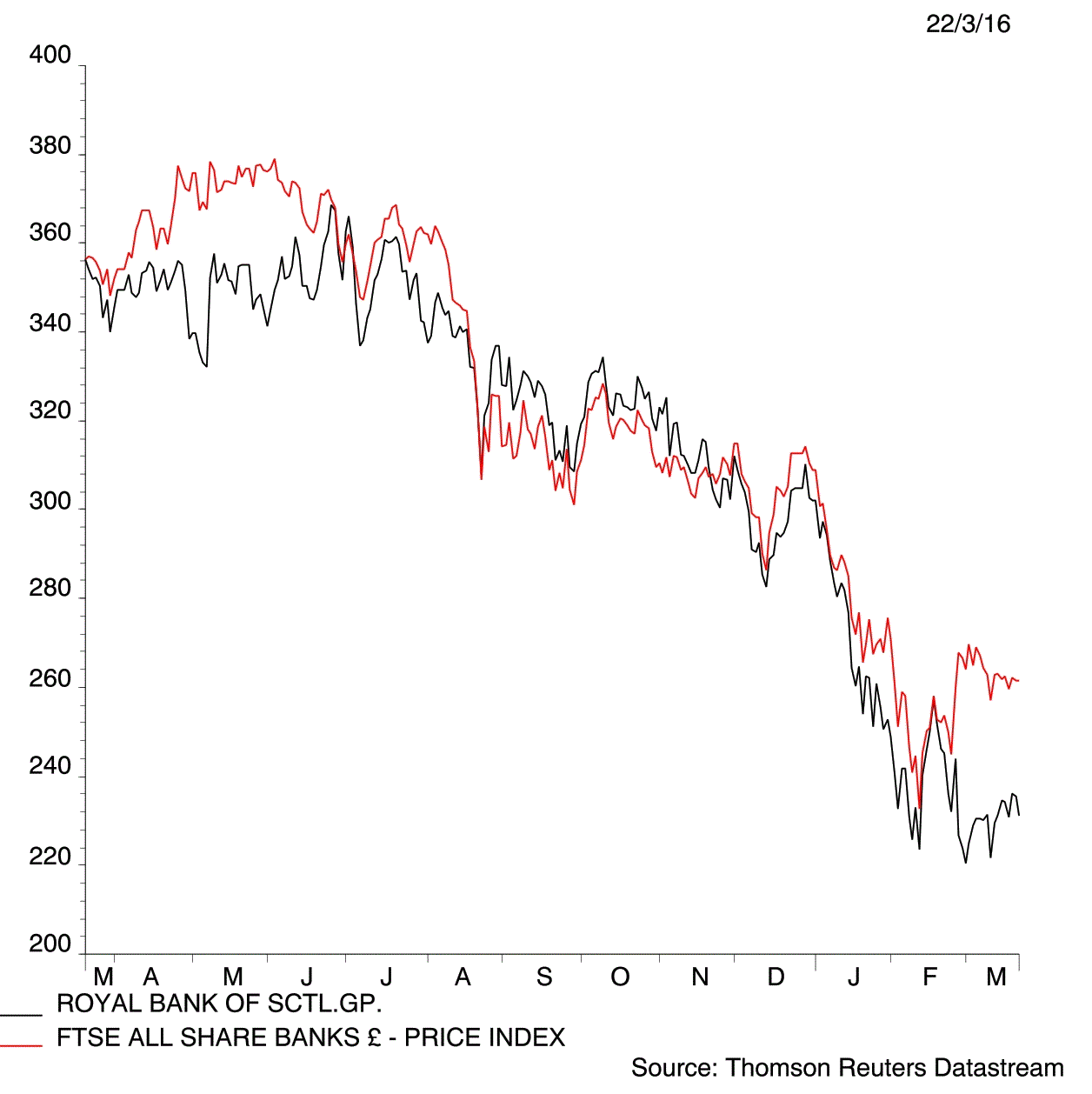Loss-making lender Royal Bank of Scotland (RBS) can start paying dividends again after ending a scheme that gave the government priority over shareholder returns.
The Dividend Access Scheme (DAS) was established when the bank was bailed-out in 2008 and has now been closed after £1.2 billion was paid to the treasury. The scheme forbade RBS from paying dividends to any shareholder other than the government.
The 1.5% fall in the bank’s shares to 231.9p shows that the market is cold on the idea of a dividend reintroduction. Given the continued weak performance of the business there are higher priorities for its cash.
The retail, commercial, private and investment bank has lost money for eight consecutive years after posting a £2.7 billion pre-tax loss for 2015.
RBS may have to find capital to pay potential fines and further compensation payments linked to mis-selling scandals.
Management have not confirmed it will be recommending a dividend this year, but Investec analyst Ian Gordon has pencilled in a 5p a share payment for 2016, rising to 15p in 2017. This puts the stock on prospective 2.1% and 6.4% yields, respectively.
RBC Capital Market’s Claire Kane anticipates a 10p a share dividend in 2016, or a 4.3% yield, doubling to 20p a share by 2018, or 8.6%.
RBS hasn’t paid a dividend since the 33.2p a share it returned to shareholders in 2007.
Rival bailed-out lender Lloyds Banking (LLOY) reintroduced shareholder payments in 2014 and its status as a progressive dividend stock was confirmed in 2015 with the 2.75p a share payment being 266% higher than the 0.75p dividend paid a year earlier.
The two banks are in different stages of the recovery process. While RBS continues to report losses Lloyds made a £1.6 billion pre-tax profit in 2015 and is close to fully exiting state ownership.
RBS has reduced the tax-payers’ stake to around 73% from the 84% it bought in 2008.





